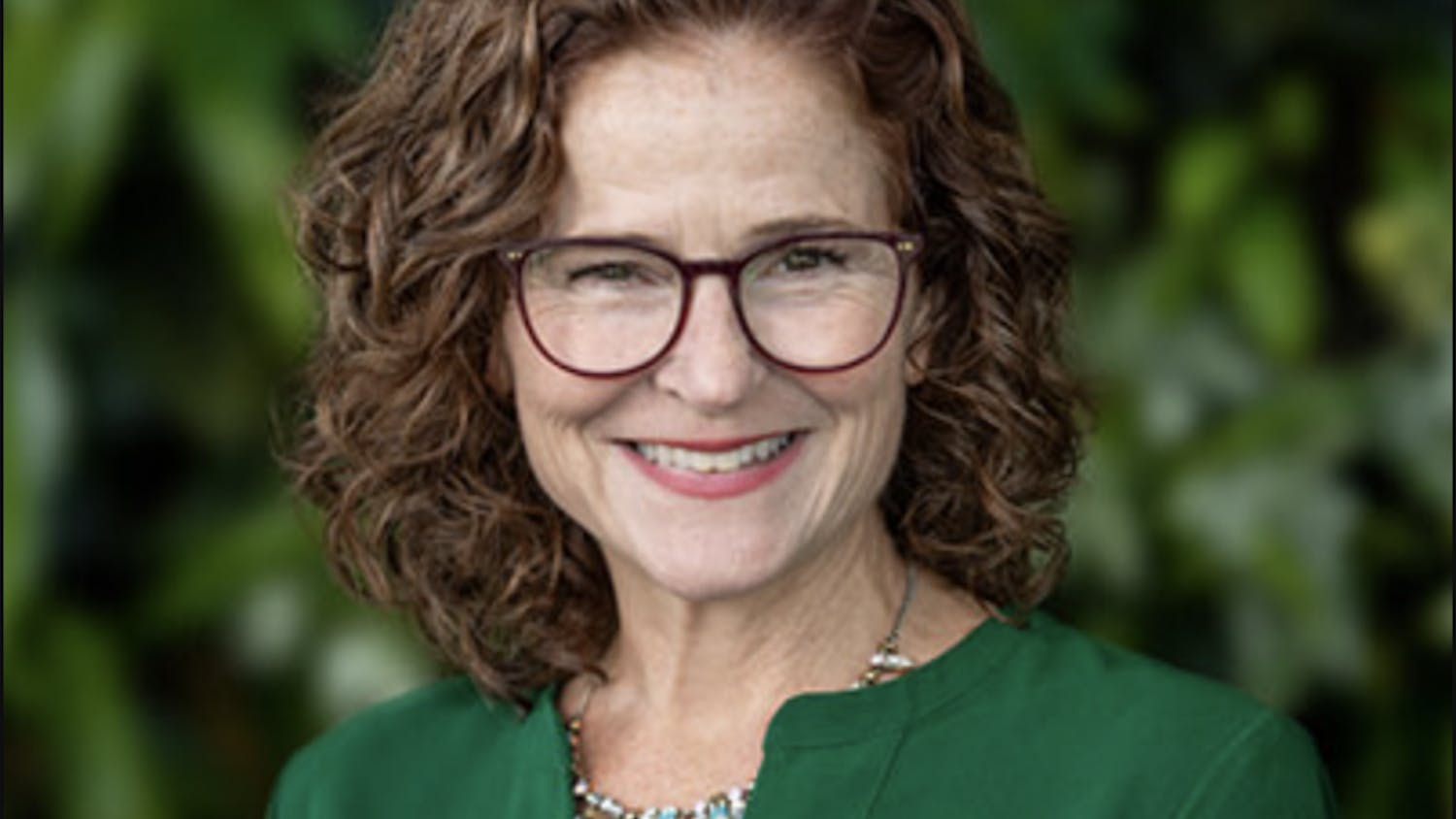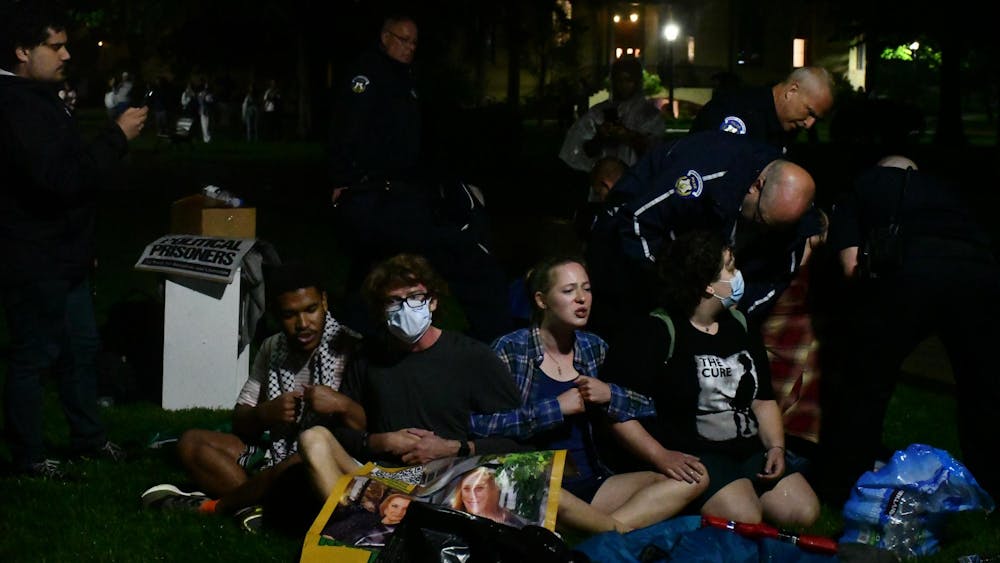From the beginning of the COVID-19 pandemic, medical experts have been looking for inexpensive and effective ways to detect positive cases. While nasal swab and nasopharyngeal testing gained traction across the U.S., saliva-based testing is becoming more prominent, with the technology being adopted in the surveillance testing strategies of institutions like University of Illinois at Urbana-Champaign, Yale University, University of South Carolina and Rutgers University. Here at Notre Dame, this type of test was implemented on Sept. 20 as part of the University’s large-scale surveillance testing strategy, which also includes nasal swabs. Associate vice president for research, Liz Rulli, who also leads the team that planned and implemented the University’s surveillance testing strategy, said Notre Dame adopted saliva-based testing due to its effectiveness and lower costs.
“It’s self administered, so it doesn’t require nursing staff to do the test, and it’s very safe for everyone at the collection and in the lab as well,” Rulli said.
Paul Bohn, a professor in the department of chemistry, who advises Rulli’s team, said saliva-based testing expedited the chemical process behind detecting the virus compared to nasal testing. “Basically if you have the virus, the virus is transferred to the swab, and then there are two separate steps that are associated with getting the virus off the swab, breaking the virus down and then transferring the virus into a solution that can turn the RNA into DNA,” Bohn said. The move towards saliva-based testing came after Bohn became aware that a long-time colleague and Notre Dame alum, Paul Hergenrother, a professor in University of Illinois at Urbana-Champaign’s department of chemistry, was working on a new kind of sample collection strategy. “I thought, ‘Well, this sounds like it could really be valuable for Notre Dame,’ because if we were going to get to the point where we were going to want to do widespread testing, we would need something that would be sufficiently acceptable that students would want to or be okay with being tested on a routine basis,” Bohn said. Hergenrother began developing this type of test in late April through the Manhattan Project, which aimed to “develop a fiber based test that bypassed any sort of the need for any supply chain limiting reagents, and that could be employed at a large scale and with a high frequency, and that was inexpensive,” he said. After the experimental stage concluded, Hergenrother said the group made its manuscripts freely available in order to help other universities cope with the pandemic. “The thing that universities have is that they have the technical expertise, and they have the equipment to run these tests,” Hergenrother said. “Here at the University of Illinois, we’re doing 10,000 a day, and have really dramatically lowered our positivity in the area. It’s just a luxury to be able to go get tested whenever you want and get a result in five to 10 hours. It’s remarkable.” Contrary to the nasal tests that are also administered at Notre Dame, the saliva samples are not taken to a commercial lab, instead, they are processed on campus at the University’s Genomics and Bioinformatics Core Facility, directed by Michael Pfrender, a professor in the department of biology who was tasked with getting the laboratory ready to process samples. “For the past two months, it’s really been helping to get that lab organized and set up,” Pfrender said. “We started from scratch with all the equipment needed to run the tests, and we had to hire staff to staff it. And then we hit the setup all the computer infrastructure working with our Center for Research Computing.” Since September, around 8,000 saliva samples have been collected, Rulli said, but the University is looking to ramp up its daily testing. On Oct. 14, 827 tests were collected — the largest amount per day— according to the HERE dashboard. However, Pfrender said the laboratory has the capacity to process 1,000 samples per day. “The sample part is easy and quick,” Pfrender said. “We can do a lot of people and generate or collect a lot of samples. Having a facility on campus allows us to do that high throughput, and we can get the results very quickly. So if we do find individuals that we think warrant further testing, or that we should be following, we can do that. So that’s the big advantage of having a facility like that.”Surveillance testing at Notre Dame
The University’s reopening of campus for the fall semester was possible in large part due to its establishment of a large scale testing strategy, which includes three types of tests: rapid antigen, commercial nasal PCR and saliva-based testing. The rapid antigen test results are delivered in a matter of 15 to 20 minutes and are administered to people who receive a red pass from their daily health check, or are presenting symptoms. The commercial nasal swabs and the saliva-based samples — which are both PCR tests — are part of Notre Dame's surveillance testing strategy. Another key difference between the three is that, at Notre Dome, only the rapid antigen tests and nasal swabs can be utilized as diagnostic test, as the university is still working on obtaining the Clinical Laboratory Improvement Amendments (CLIA) certification for saliva-based testing. “You have to have your lab CLIA certified in order to give a result to a patient,” Rulli said. “So we’re unable to say you’re positive or you’re negative. With those tests out of those saliva lab, we’re able to say, there’s nothing further you need to do, or we need you to go get a diagnostic test.” Since saliva-based tests are currently exclusively used in a surveillance fashion, instead of having the samples traced back to individuals, they are aggregated into a pool of people. “If everybody in the pool is negative, the whole pool tests negative, but if the if one of the people is positive then the whole pool is asked to go and get a diagnostic test,” Bohn explained. Pfrender said that having a robust surveillance testing strategy provides the benefit of early detection, something that can help mitigate the spread. “What we know now about the virus is that actually, you’re shedding the virus, typically for a few days before you show any symptoms. So, it you randomly test everybody, you have a much better chance of catching people early on before they start to show symptoms,” Pfrender said. Another advantage, Pfrender explained, was that surveillance testing enables the identification of asymptomatic people. “Many people, especially in the demographic age group that’s in college and undergrads and early 20s, have a large portion of asymptomatic cases. They never show the symptoms, but yet they can still transmit the virus. And so if we can catch those people, then we can also further prevent the spread to people who may be more susceptible to the symptoms,” he said. In order to carry out this surveillance strategy, 50 students have been employed to collect the saliva samples. Their tasks include ushering, aiding and checking-in people inside the Joyce Center — where Notre Dame’s testing facility is located. They also scan, label and collect the testing tubes, senior Haley Rague said.One of their main goals is to provide an accommodating and calm space, Rague said.“It’s a stressful time, and we just wanted to not make going into surveillance testing seem scary and remind people of how scary the whole situation could be,” she said. “We play music throughout the whole day, and we try to be as friendly as we can with people.”Senior Katelyn Steenvoorden said she has felt safe working with potentially COVID-19 positive tests, as the students are given with protective equipment and underwent BSL2 training before starting their job.“We’re very careful as workers, we’re never actually touching the person coming in to do the test nor their sample. So I would say it’s a pretty safe process,” Steenvoorden said. “I’m always wearing gloves, I wear glasses to protect my eyes and we’re distancing ourselves.”For Steenvoorden, carrying out tests has proved to be a learning curve. The team constantly makes changes to the process in order to make it more efficient, she said.“Our supervisors encouraged us to come to them with any feedback that we had about the process and what was working and what wasn’t working. This process has been evolving, just like our school has been adapting to the whole situation. So we’re pioneering it and making the most efficient changes we can,“ she said.The students are not only working to expand saliva-based testing on-campus, but are also helping in the efforts to cross-reference nasal and saliva samples to measure their effectiveness, senior Riley Wester said.We have been cross referencing our test with diagnostic tests. Since saliva tests are faster, we want to switch over to them. So we’re making sure that the two tests are synced up — that people test the same way in the two — and, if they are not, to dig deeper into why that is,” Wester said.The three students made the same plea to the Notre Dame community: “Please show up for surveillance testing.”“I know it can be an inconvenience, but just remembering why it’s important for us to stay here on campus and showing up if you’re called for testing is extremely important,” Steenvoorden said. “We have to just accept it as the new normal. It’s going to be here at least through next semester.”












